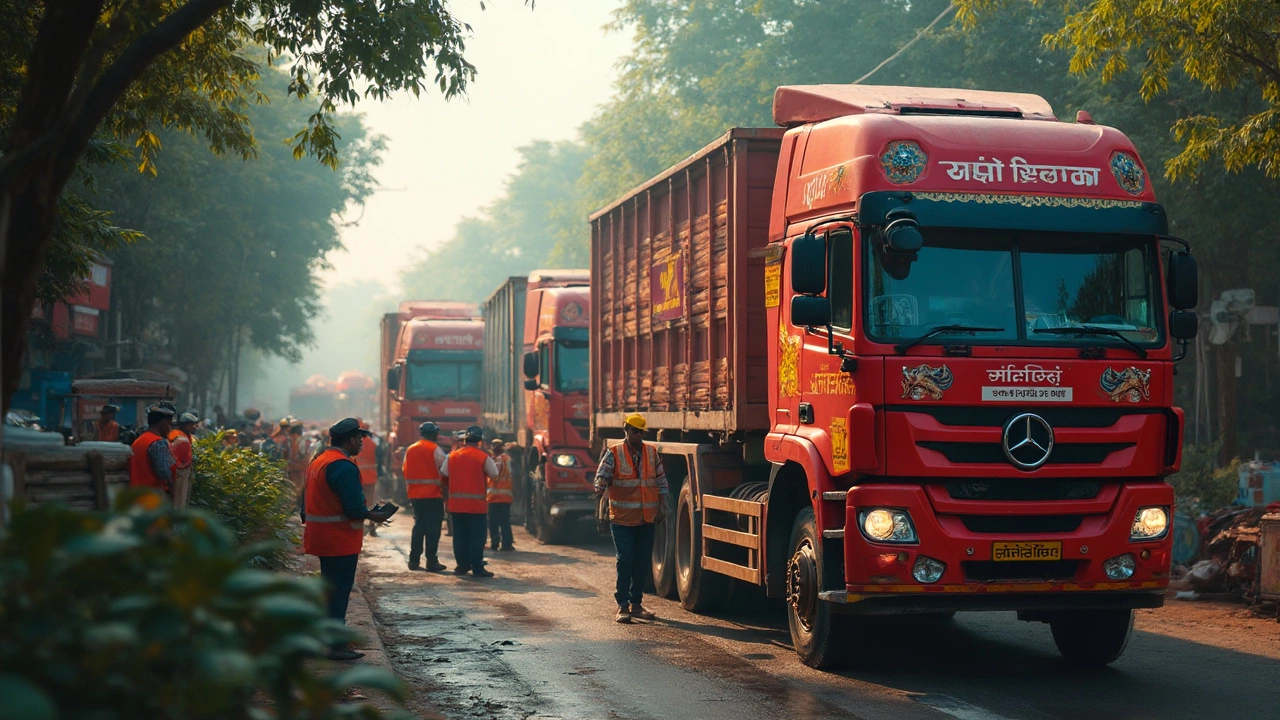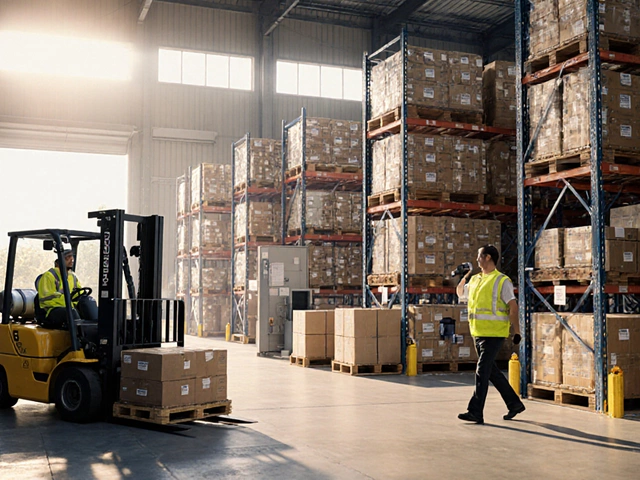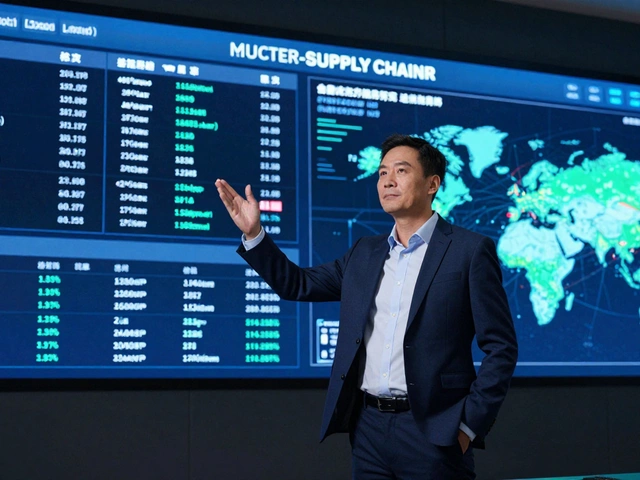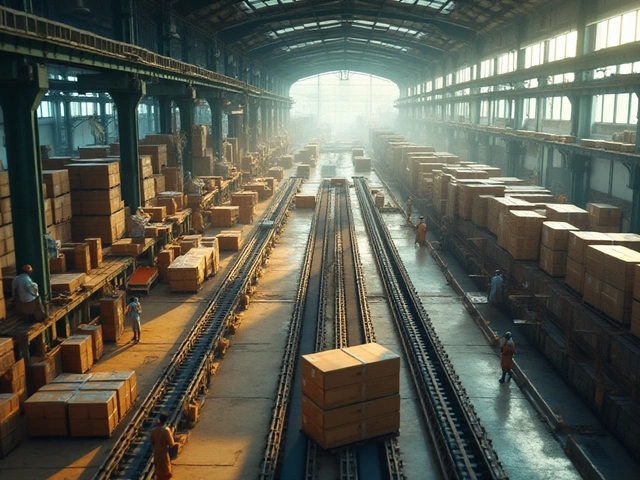Imagine your favorite online store promising next-day delivery, yet tossing your order into the wrong van, sending the wrong product, or shipping it out way too late. Frustrating, right? Behind every click-to-cart, there’s a world of moving pieces. Supply chains aren’t magic—they’re powered by methods people have refined for decades to keep everything running like clockwork. One of the most trusted frameworks in this space is called the 7 R’s of logistics. These are the guiding rules behind making sure the right thing gets to the right customer, at the right time, at the right price, in the right condition, using the right source, and to the right customer. You might think it sounds like a tongue-twister, but inside each ‘R’ is a storyline that connects factories, drivers, packers, buyers, and everyone else trying to keep the world stocked and business humming. Once you see how the 7 R’s work, you’ll spot their impact everywhere: from the steady restock of your local supermarket, to the arrival of a gift just before a birthday dinner.
Breaking Down the 7 R's: More Than Just a Checklist
The 7 R’s of logistics aren’t just a neat slogan or a corporate cliché—this roadmap is taught in business schools, quoted by shipping giants like DHL and FedEx, and actually used by manufacturers and distribution leaders across the globe. If you walk into any warehouse, you’ll hear team members talk about ‘the right product’ being where it should be—it’s not just about getting things out the door, but making sure each stage sets the next one up for success. At its core, logistics is about preventing mistakes before they happen, not just cleaning them up after the fact.
Let’s get concrete about what each R stands for:
- Right product: This is about accuracy—packing exactly what was requested, not something that “almost fits.” Retailers lose millions every year from returns due to wrong products.
- Right quantity: Shipping too much means cost overruns. Sending too little risks unhappy customers. In 2023, Amazon revealed that 30% of their customer complaints stemmed from quantity errors—most of which were preventable with better checks in place.
- Right condition: A TV that arrives cracked or a laptop dead on arrival is a logistics fail, no matter how fast it got there. The journey must protect the product, not just move it.
- Right place: This isn’t just about city or street—imagine a huge industrial shipment misplaced by one loading dock, delaying production lines for hours.
- Right time: A birthday gift two days late is a letdown, but food ingredients for a restaurant that show up after the dinner rush are worse. Most supply chain bottlenecks get traced back to timing errors.
- Right customer: Mix up two similar names at a shipping station and someone’s getting angry. Identity and address checks matter deeply.
- Right cost: You can send anything anywhere, but spending more than you make isn’t sustainable. Cost control remains a constant balancing act between speed, accuracy, and value.
None of these “R’s” can stand alone. Miss one and the whole system wobbles. And the crazy part? Customers hardly notice when it’s done right—smooth logistics is supposed to be invisible. Only when something goes wrong do people suddenly care, and often, they vent about it online.
To illustrate this, here’s a look at key logistics metrics from leading 2024 industry reports:
| Metric | Best-in-Class | Industry Average | Poor Performers |
|---|---|---|---|
| Order accuracy | 99.7% | 96.3% | 89.4% |
| On-time delivery | 98.8% | 94.3% | 83.1% |
| Return rate (due to errors) | 0.8% | 1.9% | 5.7% |
Leaders who build their logistics around these 7 R’s consistently outperform firms that leave things to chance or habit. It demands steadfast attention to detail and regular retraining, because logistics never sits still for long.
Bringing the 7 R's to Life: Real-World Examples and Human Touch
Ever wonder what happens when “the right product” doesn’t show up at “the right place?” One food delivery startup in Berlin once mixed up office locations, delivering vegan snacks to a law firm instead of an athletic club—nobody was happy, and their reputation took a hit in just an afternoon. At home, my spouse Clara once ordered a fancy candle set for a dinner party. She got sent a box of sports tape instead. The error wasn’t just funny—it meant the room smelled like rubber, not vanilla, all night. Those mix-ups aren’t just embarrassing—they’re expensive.
Big companies avoid this through meticulous inventory systems and real-time tracking. Walmart, for instance, invested heavily in RFID technology for product traceability. Now, every soda bottle and box of cereal gets a tiny chip, so the moment there’s a mix-up, they can trace exactly where things went sideways. In the healthcare world, hospitals invested in barcoding medicines to avoid deadly mix-ups. When done right, lives are literally saved; one hospital’s switch to barcode logistics slashed medication errors by 86% in the first year.
Consider “the right time.” Fashion brands scramble every season to stay ahead of trends. If new shoes or jackets miss the launch week due to a dockworker strike or customs delay, sales can nosedive by 40%. Their logistics teams obsess over backup plans, alternate shipping routes, and rapid data sharing to stay on track. For companies shipping globally, this means balancing speed with customs rules for each country, plus weather risks and regional holidays—nothing is ever set-and-forget.
Let’s not forget cost. During the pandemic, shipping one container from China to the US ballooned from $2,000 to nearly $20,000 at the worst moments. Smart brands adjusted: some switched to air freight for high-value goods, others consolidated shipments, and some just delayed launches to avoid paying ten times as much. Flexibility saved hundreds of millions across the industry. Small tweaks—choosing less urgent shipping methods or timing orders to fill loads—often add up to massive annual savings.

Risks and Pitfalls: Where the 7 R's Slip Up
So what knocks a logistics operation off the rails? Three big risk zones pop up again and again: communication breakdowns, over-reliance on outdated tech, and last-minute changes.
Take communication. If order data gets garbled during a handoff between a retailer and a shipping partner, the whole chain of ‘R’s’ collapses. In 2022, a UK-based furniture company lost a $1.6 million contract when customer addresses were mismatched for just 2% of their orders. All those satisfied shoppers? Suddenly, they were angry social media critics. The fix? Investing in better integrated software and frequent cross-team calls. Simple, but expensive if ignored.
Another tripwire: ignoring technology upgrades. Some firms still cling to paper processes—stacked clipboards, hand-written orders, sticky notes. This approach might feel “safe,” but studies show they suffer three times more errors. Modern logistics leans on automation, real-time dashboards, and AI predictions. That doesn’t mean robots run the show alone, but teams with updated tech can spot and correct mistakes before they cascade.
Last-minute changes can spell disaster, too. Customers switch delivery addresses, seasons change early, or regulatory tweaks appear overnight. Resilience comes from having clear protocols—can you reroute in seconds? Can you check stock levels and promise a new delivery in minutes? Fast-movers stay ahead by rehearsing scenarios and empowering teams to make (and learn from) quick decisions.
Here’s a tip from someone who’s seen plenty of small firms winging it: map your logistics process visually. Walk through each R, test your backup plans, and set up mock disasters every quarter. It’s like a fire drill for your supply chain. Those who rehearse rarely panic when the real thing hits.
Power Moves: How to Nail the 7 R’s in Your Own Supply Chain
Getting the 7 R’s right doesn’t just happen because people try hard; it comes from building tools and habits that make “right” the default. Here’s how companies—big and small—lock them into place:
- Use well-built inventory management software. It must track stock levels, order history, and locations in real time.
- Automate routine processes. Barcode scanners or RFID tags slash pick-and-pack mistakes. Automated alerts flag low stock or shipping delays before they turn into crises.
- Train teams to think big-picture. A worker who understands all 7 R’s can catch problems colleagues might miss. Run scenario drills—How would you handle wrong-address orders? Damaged shipments? Missing products?
- Build strong relationships with suppliers and delivery partners. Clear contracts and communication cut down on finger-pointing when problems arise.
- Obsess about the feedback loop. Ask unhappy customers exactly what went wrong—then redesign your process so it doesn’t happen again. One global toy company uses QR codes for instant feedback after every delivery, allowing them to spot patterns before they become disasters.
- Plan for pitfalls. Weather delays, customs hang-ups, wild swings in demand—all should have playbooks ready to go. Leading firms aim for at least two backup suppliers on key items, so if one falters, the next can pick up slack without delay.
And if you’re just getting started, start small. Pick one ‘R’ you know is causing friction, study the root cause, and rally your team for a fix. You’ll spot improvements in customer reviews, fewer returns, and—most importantly—less stress for everyone on the team.
Mastering the 7 R's of logistics won’t make you famous. Your reward? Smoother days, happier customers, and a business that’s always one step ahead of the mad world outside its doors. It’s a quiet kind of superpower, but one every modern company desperately needs, whether you’re shipping candles or car parts, medicine or magazines. And if you ever do wonder what separates the winners from the rest, you’ll know—check if they practice these 7 rules. The ones who take them seriously rarely stay underdogs for long.





